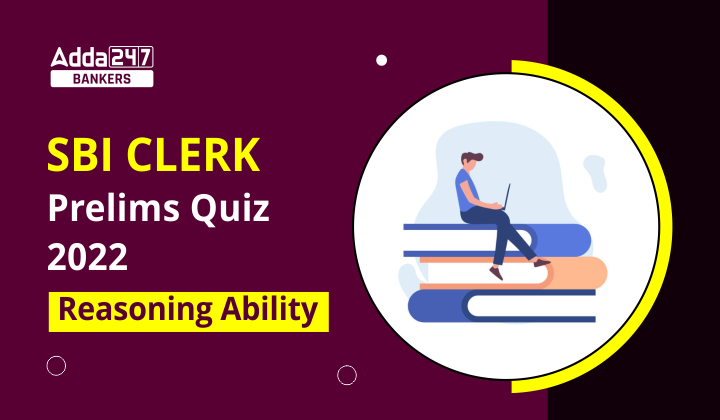Directions (1-3): Study the following information carefully and answer the given questions.
Eight members A, B, C, D, E, F, G and H in a family, there are three married couple in this three-generation family. A is the son-in-law of H who has only one daughter. B is the maternal grandmother of F. C is the only son of D who is the father of H. E is the sister-in-law of F. C is unmarried. F is not a male member. G is spouse of H. E is unmarried.
Q1. If K is the father of G, then what is the relation of K with respect to F?
(a) Paternal grandfather
(b) Maternal grandfather
(c) Father
(d) Brother-in-law
(e) Son-in-law
Q2. If C is married to R, then who among the following will be nephew of R?
(a) E
(b) A
(c) F
(d) G
(e) None of the above
Q3. Who among the following is the brother-in-law of G?
(a) D
(b) B
(c) A
(d) C
(e) E
Directions (4-5): Read the following information carefully to answer the questions given below:
There are seven members in a family. There are three married couples in the family. A is the mother of C. D is the daughter of B. L is the niece of N who is a female but not the daughter of A. E is the son-in-law of A. B and C are males. Both children of A are married.
Q4. Who among the following is the wife of C?
(a) N
(b) L
(c) D
(d) Cannot be determined
(e) None of these
Q5. How is B related to L?
(a) Brother
(b) Husband
(c) Grandfather
(d) Father
(e) Cousin
Directions (6-10): Following questions are based on the five three-digit numbers given below.
947 376 694 739 863
Q6. If all the digits in each of the numbers are arranged in increasing order within the number, then, which of the following number will become the lowest in the new arrangement of numbers?
(a) 947
(b) 863
(c) 739
(d) 694
(e) 376
Q7. If all the numbers are arranged in ascending order from left to right then, which of the following will be the sum of all the three digits of the number which is 2nd from the right in the new arrangement?
(a) 18
(b) 19
(c) 15
(d) 16
(e) None of these
Q8. What will be the difference when third digit of the 3rd lowest number is multiplied with the second digit of the highest number and third digit of the 2nd highest number is multiplied with the second digit of the lowest number?
(a) 21
(b) 20
(c) 15
(d)16
(e) None of these
Q9. If the positions of the second and the third digits of each of the numbers are interchanged then, how many even numbers will be formed?
(a) None
(b) One
(c) Two
(d) Three
(e) Four
Q10. If one is added to the second digit of each of the numbers and one is subtracted from the third digit of each number then, how many numbers thus formed will be divisible by three in new arrangement?
(a) None
(b) One
(c) Two
(d) Three
(e) Four
Directions (11-15): The given questions are based on the following arrangement of letter, numbers and symbols.
E M & ^ * 5 4 U S G % 8 K 6 9 * # 5 P N F @ 3 8 # 9 S K % 2 8 ~ 1 K I
Q11. If the first twelve elements are reversed then which letter is eighth to the left of the seventh element from the right end?
(a) P
(b) F
(c) M
(d) Q
(e) None of these
Q12. Which is the fifth consonant to the right of the 4th number from the left end in the arrangement?
(a) P
(b) F
(c) K
(d) S
(e) None of these
Q13. If all the symbols are dropped from the series, then which of the following element is fifth to the left of the sixth letter from the right end?
(a) G
(b) 6
(c) 8
(d) K
(e) None of these
Q14. If we add the place value of all consonants and subtract it from the addition of all vowel’s place value then what will be the final value?
(a) 90
(b) 80
(c) 82
(d) 92
(e) None of these
Q15. Which element is second to the right of fifth from the right end?
(a) S
(b) K
(c) F
(d) 1
(e) None of these
Solutions







 General Awareness Quiz for Bank Mains Ex...
General Awareness Quiz for Bank Mains Ex...
 English Language Quiz For Bank Foundatio...
English Language Quiz For Bank Foundatio...
 Reasoning Quiz For Bank Foundation 2024 ...
Reasoning Quiz For Bank Foundation 2024 ...







